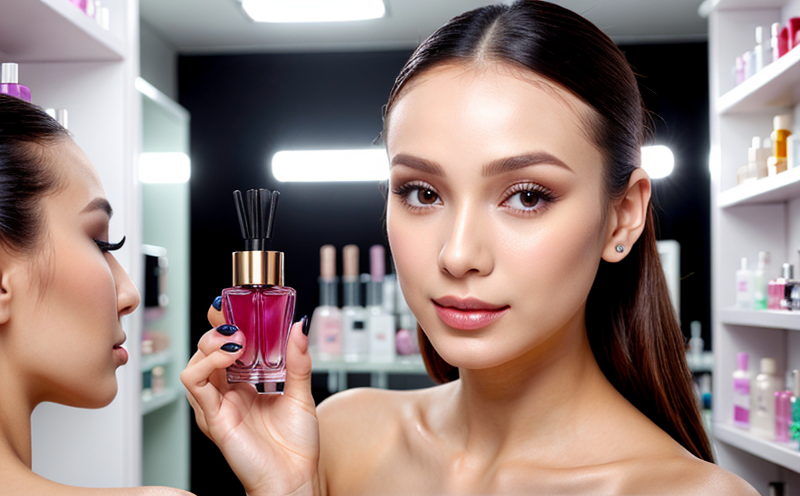Fragrance & Perfume Testing in Cosmetic Industry
Within the cosmetics industry, fragrance and perfume play a crucial role in enhancing product appeal. Fragrances are not merely decorative; they significantly influence consumer perception and satisfaction. As such, rigorous testing ensures that these products meet safety standards, regulatory requirements, and quality expectations.
The process of fragrance & perfume testing involves several stages to ensure the product is safe for use, effective in performance, and meets market demands. This includes initial chemical analysis to identify allergens or hazardous substances, followed by sensory evaluation to assess olfactory qualities such as aroma intensity, longevity, sillage (trail), and harmony.
Testing laboratories must adhere to international standards like ISO 2983 for fragrance composition testing and IEC 61967-2 for colorimetric specifications of fragrances. These standards are pivotal in maintaining consistency across brands and ensuring that the product is market-ready.
The complexity of fragrance & perfume formulations necessitates advanced analytical techniques. Chromatography methods, including GC (Gas Chromatography) and LC (Liquid Chromatography), coupled with mass spectrometry (MS), provide detailed profiles of fragrance components. Sensory analysis involves trained panelists evaluating attributes like aroma profile, freshness, and overall impression.
For quality managers and compliance officers, understanding the intricacies of these tests is essential for maintaining product integrity. The testing process ensures that fragrances are not only delightful but also safe to use, free from harmful chemicals or allergens. This dual focus on safety and sensory appeal makes fragrance & perfume testing a cornerstone of cosmetic development.
Additionally, the R&D engineers responsible for innovation in this sector rely heavily on these tests to refine formulas, optimize ingredient combinations, and introduce new scents that resonate with consumer preferences. The procurement teams also benefit by ensuring that raw materials meet stringent criteria set forth by fragrance testers.
Benefits
- Safety Assurance: Ensures the product is free from harmful chemicals and allergens, protecting consumers' health.
- Quality Enhancement: Identifies potential issues in formulation to improve overall product quality.
- Market Readiness: Compliance with international standards ensures that products are ready for global markets.
- Innovation Support: Provides data to refine formulas and introduce new scents, driving product development.
International Acceptance and Recognition
The cosmetic industry operates on a global scale, which necessitates adherence to international standards. Fragrances are tested against various regulations worldwide, including those set by the European Union (REACH), the U.S. Food and Drug Administration (FDA), and the Consumer Product Safety Commission (CPSC).
For instance, the EU's REACH regulation requires manufacturers to identify and manage chemical substances that can cause harm to human health or the environment. Similarly, FDA regulations mandate safety evaluations for all cosmetics sold in the U.S., ensuring they do not pose a risk of injury when used as intended.
The harmonization of these standards ensures that fragrance & perfume testing is consistent across borders, facilitating easier market entry and reducing compliance costs for manufacturers.
Environmental and Sustainability Contributions
In the pursuit of sustainability, the cosmetics industry is increasingly focusing on eco-friendly practices. Fragrance & perfume testing plays a role in this by identifying sustainable ingredients that are biodegradable or derived from renewable resources.
Laboratories use life cycle assessments (LCAs) to evaluate the environmental impact of fragrance formulations throughout their lifecycle. This includes sourcing raw materials, production processes, and final disposal. By promoting the use of eco-friendly fragrances, manufacturers can significantly reduce their carbon footprint and contribute positively to environmental conservation.
The sector is also exploring natural alternatives to synthetic fragrances, which are often petroleum-based and have a higher environmental impact. Natural extracts and essential oils not only offer a more sustainable option but also provide unique sensory experiences that resonate well with eco-conscious consumers.





